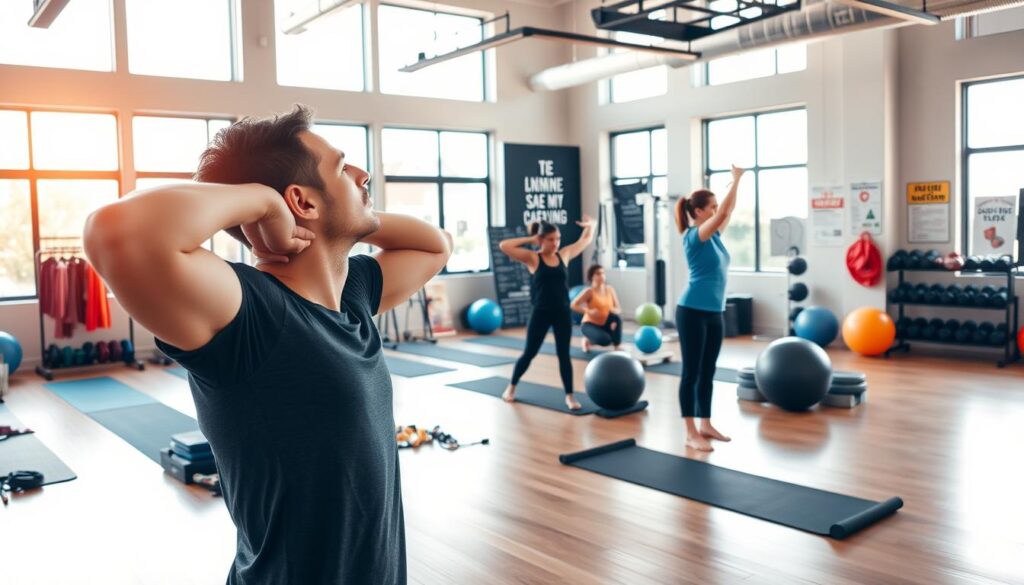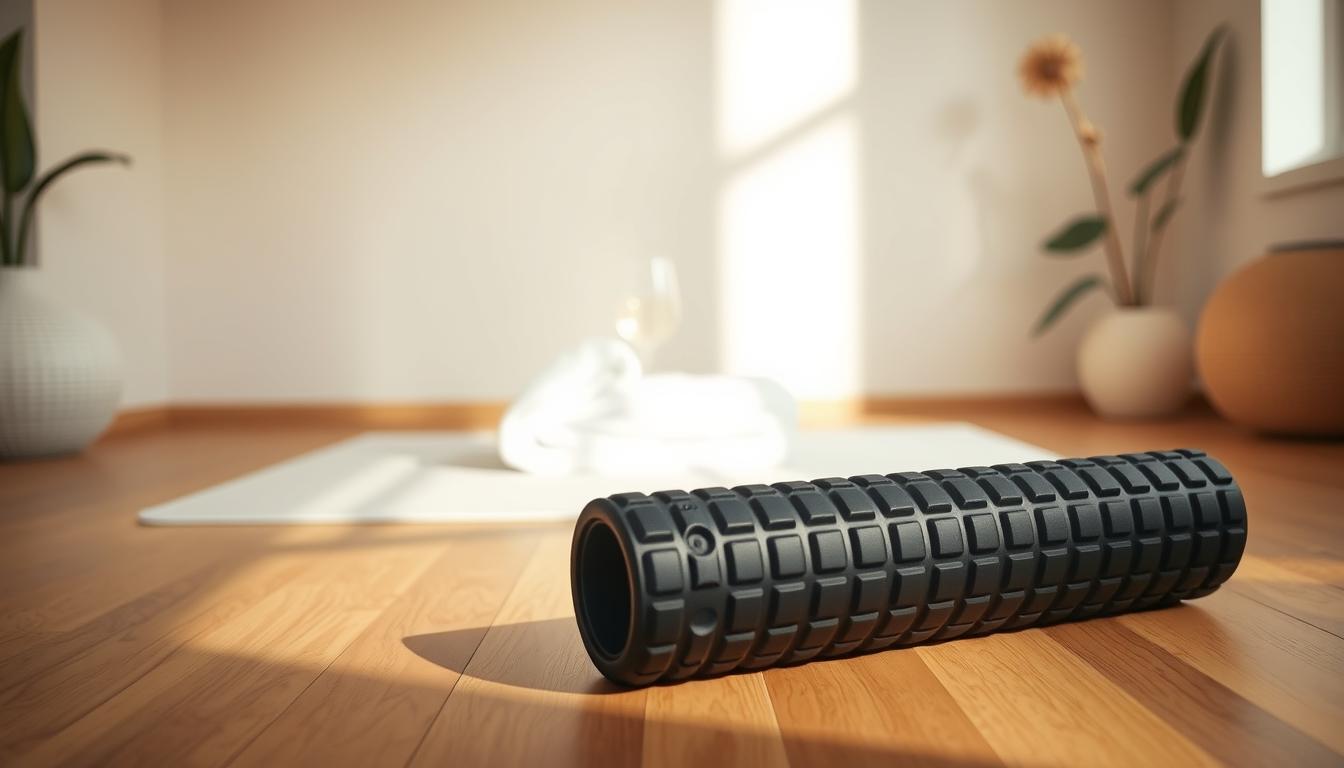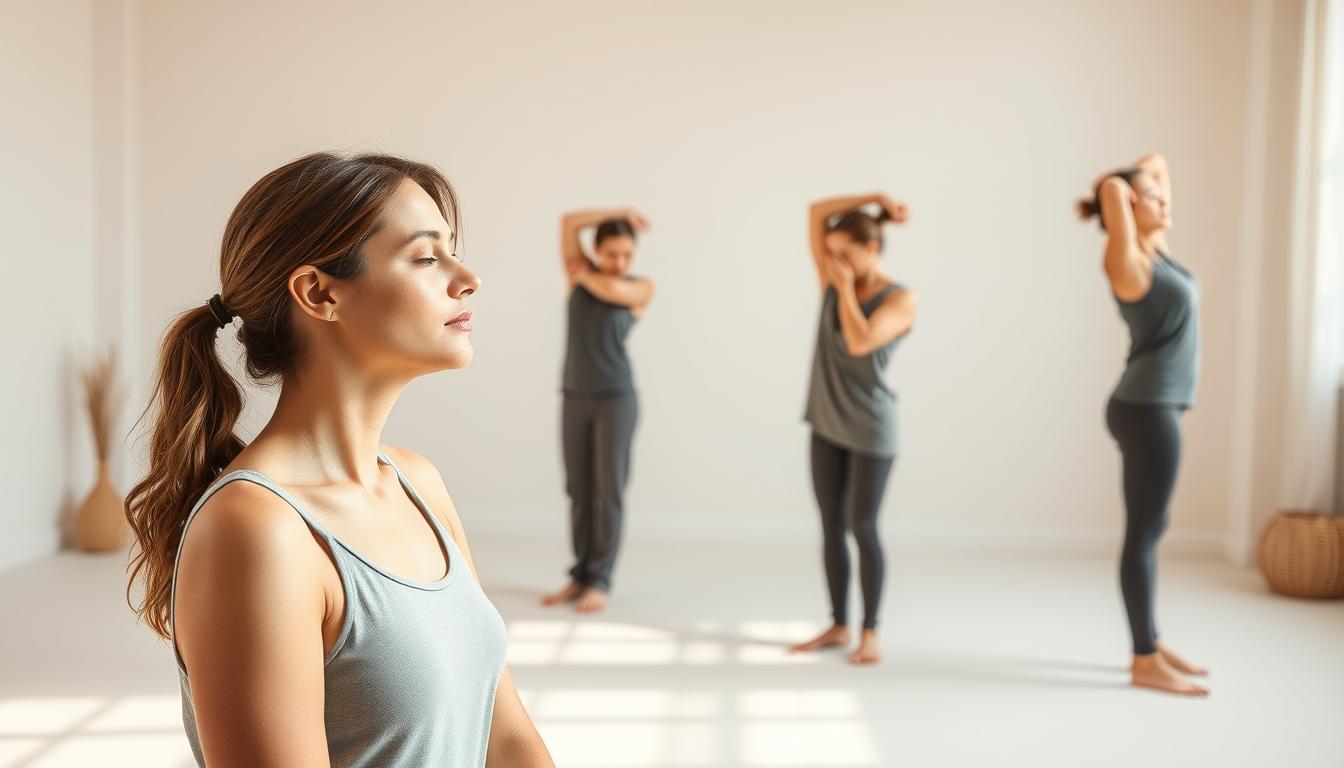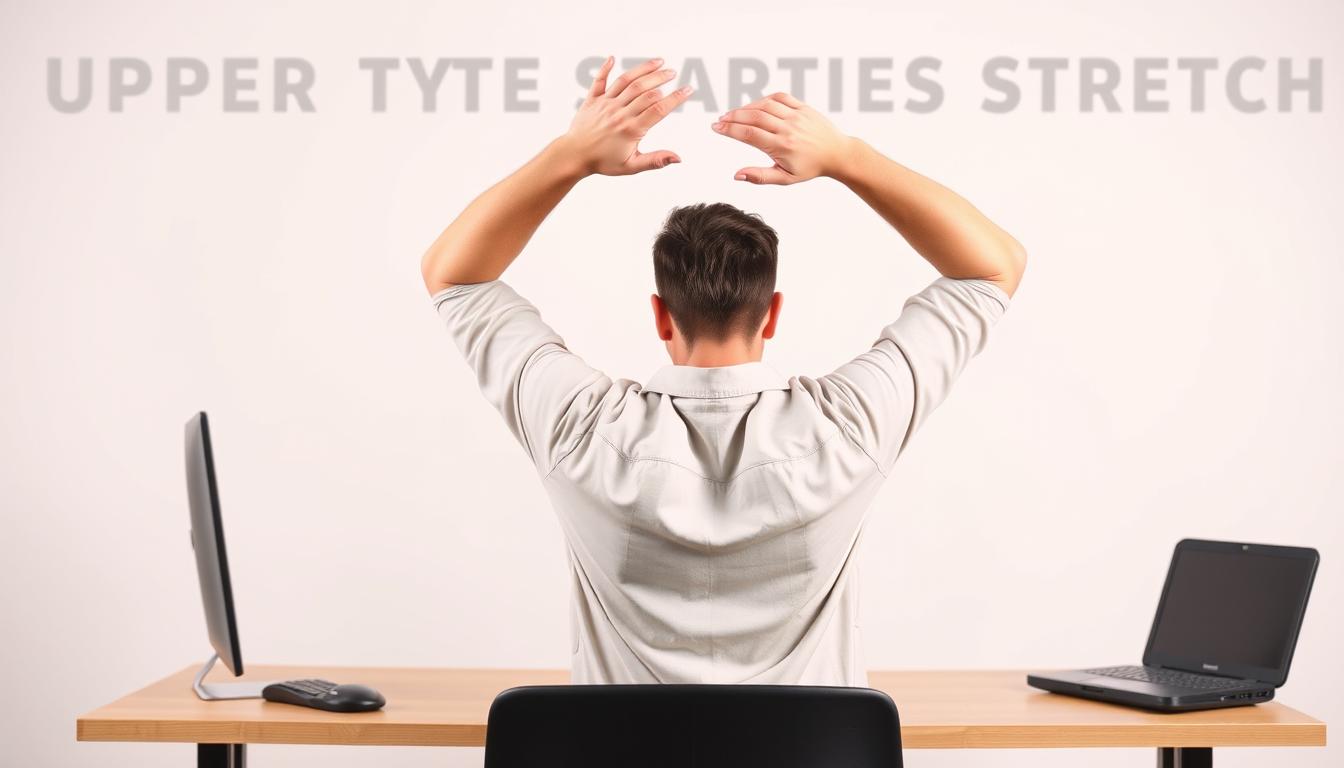Many people deal with neck pain every day. Causes include bad posture, repetitive strain, and stress. There are exercises that help manage and prevent this pain. Chin tucks are particularly useful for relieving neck pain and improving posture. By regularly doing chin tucks, your neck becomes more stable and flexible. This helps lessen pain and keeps your neck healthy.
Understanding Neck Pain
Neck pain comes from many things that affect us in today’s fast world. Knowing why neck pain happens is key to fixing it. Poor sitting habits, doing the same motions over and over, and stress can cause neck pain. These things really change how we live, making us feel bad and less able to do our best.
Common Causes of Neck Pain
Neck pain often comes from:
- Poor posture while sitting or using electronic devices.
- Repetitive movements that strain the neck muscles.
- Muscle tension caused by stress and anxiety.
Statistics on Neck Pain Prevalence
About 75% of people will deal with neck pain at some point. It’s a big problem that affects work and sleep. Knowing the stats helps us see how big the issue is and shows the need for ways to stop it and fix it.
The Role of Posture in Neck Pain
Maintaining the right posture is crucial for our health. Bad posture leads to discomfort, especially in the neck. Being hunched over makes the head lean forward and shoulders curl. This strains neck muscles, causing ongoing neck pain. It’s important to be aware of how we sit and stand.
Effects of Poor Posture
Prolonged bad posture harms our bodies, especially our necks. The main issues include:
- Increased muscle tension and strain in the neck region
- Decreased blood flow, leading to fatigue and discomfort
- Exacerbation of spinal misalignments
- Potential for developing headaches
By improving our posture, we can lessen pain and boost overall health.
Identifying Postural Issues
Correcting posture starts with finding the problems. Looking at how we work and our daily habits helps avoid neck strain. Try the following:
- Assess desk and chair heights for optimal alignment
- Monitor screen levels to keep the head straight
- Take regular breaks to stretch and adjust posture
Tackling these issues helps reduce the negative impact of slouching. It makes our necks feel better.
What are Chin Tucks?
The chin tuck exercise is key for fixing neck muscle problems. It targets deep neck muscles. By doing this simple move, your neck lines up better. This can fix bad neck postures and ease pain.
Defining the Chin Tuck Exercise
A chin tuck means pulling your chin down to your chest. You must keep your back straight while doing it. Though it sounds simple, it works important muscles well. Doing it often can put your neck in the right spot. This helps get rid of pain and makes your neck healthier.
Muscles Targeted by Chin Tucks
The main muscles that chin tucks work on are:
- Deep cervical flexors
- Scalenes
- Longus colli
They help keep your neck steady and improve how you stand. Making these muscles stronger can really help fix your neck. This leads to less pain and a better feeling in daily life.
Why Perform Chin Tucks?
Chin tucks are an easy exercise that brings many benefits for those with neck pain and bad posture. When you do this exercise regularly, you can lessen neck pain a lot. You will also improve your posture.
Benefits for Neck Pain Relief
Chin tucks are great for easing neck pain. They make the deep neck muscles stronger. This helps reduce the stress from daily life. By doing them often, you can:
- Depend less on the bigger neck muscles, lessening tension and soreness.
- Boost muscle stability to help your cervical spine.
- Improve blood flow which speeds up recovery from injuries.
Enhanced Posture Improvement
Chin tucks are not just for neck pain relief. They also improve your posture. They work on the muscles that keep your head and neck up. Doing chin tucks regularly can:
- Help keep your spine straight, lowering the chance of back and neck problems.
- Improve stability in the upper body, making everyday tasks easier and more comfy.
- Increase body positioning awareness, helping create healthy posture habits for the long term.
How to Alleviate Neck Pain With Chin Tucks
Doing chin tucks the right way can really help with neck pain. It’s very important to know how to do a chin tuck correctly to get the most out of it. Here you’ll find step-by-step instructions and mistakes to avoid for the best outcome.
Steps to Perform Chin Tucks Correctly
- Start by sitting or standing tall. Make sure your shoulders are down and your head is right above your spine.
- Then, pull your chin back toward your neck, but keep your head straight. Think of moving your chin back like a little inchworm.
- Stay in this position for 5 seconds, breathing in and out calmly. Pay attention to your neck and shoulders for better results.
- Relax and go back to the beginning pose. Try doing this 10 times in each session to strengthen your muscles over time.
Common Mistakes to Avoid
- Pushing your head too far forward instead of pulling it back could mess up your progress and hurt your neck.
- Not breathing right during the exercise can cause more tension than needed.
- Ignoring your shoulder blades’ placement can mess up your posture and lessen the exercise’s effect.
- Doing chin tucks too fast or with a lot of force might lead to getting hurt.
Chin Tuck Variations for Enhanced Relief
Adding different chin tuck exercises can make your neck workouts better. Each type works on certain neck muscles. This means they’re good for all fitness levels and needs. Try out supine chin tucks, quadruped chin tucks, and wall chin tucks.
Supine Chin Tucks
Supine chin tucks are done lying on your back, which gently strengthens the neck. Here’s how to do it:
- Find a comfy spot and lie on your back with knees bent.
- Put a towel under your neck for support.
- Gently tuck your chin to your chest, making a double chin.
- Keep this pose for a few seconds, with your head relaxed.
This method eases neck pressure while working the muscles for better posture.
Quadruped Chin Tucks
Quadruped chin tucks work your neck and add stability. Here’s how to do them:
- Be on hands and knees with a straight spine.
- Pull your chin in to your chest without curving your back.
- Hold a bit, then release slowly.
This stance lessens neck strain, ideal for those with neck pain.
Wall Chin Tucks
Wall chin tucks use a wall for better stability and alignment. How to do it:
- Stand with your back to a wall, touching with head and shoulders.
- Draw your chin back to the wall, keeping your head in place.
- Stay like this for a few seconds, feeling your muscles work.
This exercise boosts stability and helps achieve better posture by activating neck muscles.
Complementary Exercises for Neck Health
Adding exercises for neck health into your daily routine can really boost flexibility. It can also cut down on discomfort. Two key methods to try are gentle neck rotations and the levator scapulae stretch. They make the neck area more flexible, lessen tightness, and support a healthy posture.
Gentle Neck Rotations
Neck rotations are a top pick for making your neck more flexible. Begin by sitting or standing with a straight posture. Allow your head to be loose. Then slowly turn your head to the right and pause for a few seconds before going back to the start. Do the same by turning to the left. Target for 5-10 turns for each side. This easy move boosts blood circulation and flexibility, aiding your neck health.
Levator Scapulae Stretch
The levator scapulae stretch specifically helps relax a muscle that gets tight from bad posture or stress. Start by sitting in a comfy position with your back straight. Lean your head to the right, trying to touch your shoulder with your ear. Then, use your right hand to gently push on your head for a deeper stretch. Stay like that for 15-30 seconds, feeling the stretch on your neck’s left side. Switch sides and do it again. Doing this stretch often can really help ease tension and boost neck health.
Creating a Neck Pain Relief Routine
Creating a regular neck pain relief plan helps improve your neck health. Adding chin tucks to your daily routine can make you feel better overall and ease pain. Picking certain times to do these exercises helps you stick to your plan.
Incorporating Chin Tucks into Daily Life
To get the most out of your neck pain relief routine, try doing chin tucks throughout your day. Here are some tips:
- Morning: Begin with two to three sets of chin tucks to start your day on a positive note.
- During Work Breaks: Do short sessions every hour to relax your neck muscles and improve your posture.
- Evening: End your day with some repetitions to let go of any stress built up during the day.
Setting a Schedule for Exercises
Staying consistent with exercises is key. Use calendars or device reminders to keep a structured schedule. Here’s how to plan effectively:
- Pick specific times for your chin tucks, making them a regular part of your routine like brushing your teeth.
- Keep track of your progress in a journal to recognize achievements, which motivates you to keep going.
- Change your schedule as needed to keep your life balanced, making sure your neck exercises stay important.
Exercise Safety and Effectiveness
It’s key to perform neck exercises safely to get the most benefit and reduce risk. Knowing your body’s limits and your workout surroundings is part of exercise safety. It’s also crucial to know the signs of neck pain.
Avoiding Common Pitfalls
To exercise effectively, proper form and being aware are vital. Stay clear of common mistakes such as:
- Forgetting to warm up before starting neck exercises
- Overexerting yourself without proper recovery time
- Neglecting to adjust activities based on physical feedback
- Ignoring advice from fitness professionals or physical therapists
Recognizing Warning Signs During Exercise
Being alert to neck pain signs can keep injuries at bay. Be on the lookout for:
- Sharp pain radiating from the neck
- Numbness or tingling in the arms and hands
- Increased discomfort during specific movements
- Persistent stiffness following exercises
Focus on safe exercising and watch for any warning signs. This way, you can exercise well and keep your neck healthy in the long run.

Long-Term Maintenance of Neck Health
To keep your neck healthy over time, you need to stick to good daily habits. Adding simple, yet strong, practices to your life helps a lot. It makes your neck stronger and cuts down on pain and discomfort as time goes by.
Daily Habits for a Healthy Neck
Setting up daily habits is key for your neck’s well-being. Here are some important steps:
- Maintaining an ergonomic workspace, including proper desk height and chair support.
- Taking regular breaks from screen time to stretch and reposition the neck.
- Sleeping with a supportive pillow that aligns the neck and spine.
- Practicing relaxation techniques to reduce tension that can affect neck health.
Adapting Your Routine Over Time
As you get stronger and more flexible, changing your routine is essential. Here are ways to adjust:
- Incorporating more challenging exercises to further promote maintaining neck strength.
- Trying out different forms of physical activity, such as yoga or Pilates, to enhance adaptability.
- Regularly reassessing ergonomic setups and modifying as needed based on work habits.
- Staying informed about new techniques or research in neck health to refine your routine.
Conclusion
Using chin tucks every day can really help with neck pain. This easy exercise takes you on a journey to less pain and better neck posture. It’s not just for quick fixes; it makes your neck strong by working the muscles that keep your spine straight.
And when you add in some gentle neck rotations and stretches, you’re taking complete care of your neck. These exercises help manage pain now and stop problems later. Making chin tucks a regular thing is key to a healthy neck.
To get the most out of chin tucks, stick to doing them regularly and watch how you hold your neck while you do daily tasks. This simple move is powerful for better health and posture, making your neck strong and pain-free.



